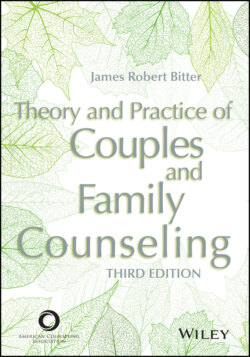Читать книгу Theory and Practice of Couples and Family Counseling - James Robert Bitter - Страница 55
The History of Family Counseling III: From Postmodern, Social Constructionism to Feminism Postmodernism
ОглавлениеTo understand a postmodern perspective, we first have to understand what the modern perspective was and from whence it came. Two forces controlled life in 16th-century Europe and America—and for much of the first half of the 17th century: the state and the church. These two forces controlled knowledge as well as every other aspect of life, and this control most often led to abuse and the dissemination of misinformation. By the second half of the 17th century, the French and American Enlightenment had begun. Wide use of the printing press, invented in the mid-15th century, the emergence of science and the scientific method, and the establishment of great universities all challenged the notions that had been promulgated by church and state. The modern world and its inhabitants as well as truth itself could now be known by everyone through reason, observation, and science. Modernism included the discovery—some would say the creation—of categories of knowledge, the study of disciplines, and credentials for knowing. Today almost all colleges and universities in the Western world are based on this arrangement for the dissemination and development of knowledge.
In a sense, the Enlightenment replaced the control and power of the church with the control and power of disciplines, or what the French social scientist Michel Foucault (1970, 1980) called knowledge positions. When one knowledge position is infused with more power than others, it becomes dominant and is sometimes referred to as the “truth.” History is most often written by the victors in life. The news on television or in magazines and newspapers often comes from the same knowledge base and offers essentially the same perspective in spite of the fact that there are almost always multiple perspectives—maybe even multiple realities. Foucault noted that dominant knowledge positions are mostly maintained by claims to established and accepted practices, processes that generate and constitute proof of the dominant position. Note that we still refer to “the” scientific method, as if there were only one true method of science, not many different ways of knowing. Still, the scientific method cannot answer many important questions, like what is love, what meaning can or should one make of one’s life, or even who will be a lasting friend to you.
Dominant knowledge positions are all about the maintenance of power. Dominant positions use processes that serve two functions: (a) They reinforce and maintain the dominant position, and (b) they eliminate or minimize alternative stories and explanations. To change dominant and powerful knowledge positions, Foucault demonstrated that the skills of the historian, the archaeologist, and the cultural anthropologist had often been used in deconstructing the widely accepted narrative and unpacking the truth.
In postmodern thought, there is never just one truth. Even common sense is always common to a specific group, but not everyone. Indeed, there is a unique meaning narrative (story) for each person who tells a story, and each story is always true for the person telling it. Two questions of significance to counselors and therapists are the following: How do these stories and perspectives come into being, and what constitutes and maintains them? and Do these stories serve the system and the people in the system well?
The answer to the first question can be found in the epistemology of Jerome Bruner (1986, 1991) and the social constructionism of Kenneth Gergen (1999, 2009). According to these theorists, stories, perspectives, and knowledge are all constructed. They emerge from interactions within relationships. The knower and the known influence each other from the moment of contact; the result therefore is coconstructed—everything from one’s view of self to the story of one’s family to the capabilities of family members.
When we are little or feel helpless, overwhelmed, and in need of support, dominant knowledge positions and the stories attached to them tend to win out: They are absorbed. Dominant stories often incorporate power positions and perspectives from larger systems (e.g., society, religion, or culture), and they appear to have the consensual validation of the larger number of others who exist in those systems. The child absorbs the dominant story of the family and tries to find a place within it, often not realizing that the entry of the child into the story has already changed it. Similarly, the family absorbs the dominant story of the community or culture in which it lives, and the community absorbs the dominant story of society. Society in general, culture, and community all foster normative behavior in subsystems and seek to maintain dominance through conformity.
Individuals and families wind up absorbing the useful and useless. They incorporate the opportunities from society, but they also easily slip into inequities related to racism, patriarchy, and homophobia. This absorption is so strong that people of color can experience racism from one another, women can deny themselves in favor of men, the poor can favor the rich, and gay men and lesbian women can be homophobic. The privileges of the dominant culture are normal; all else is less than normal. In psychology and psychiatry, less than normal has been extensively codified in the Diagnostic and Statistical Manual of Mental Disorders (5th ed.; American Psychiatric Association, 2013). Descriptions of psychopathology can be just as damaging as racism, sexism, or heterosexism—and just as easily absorbed.
